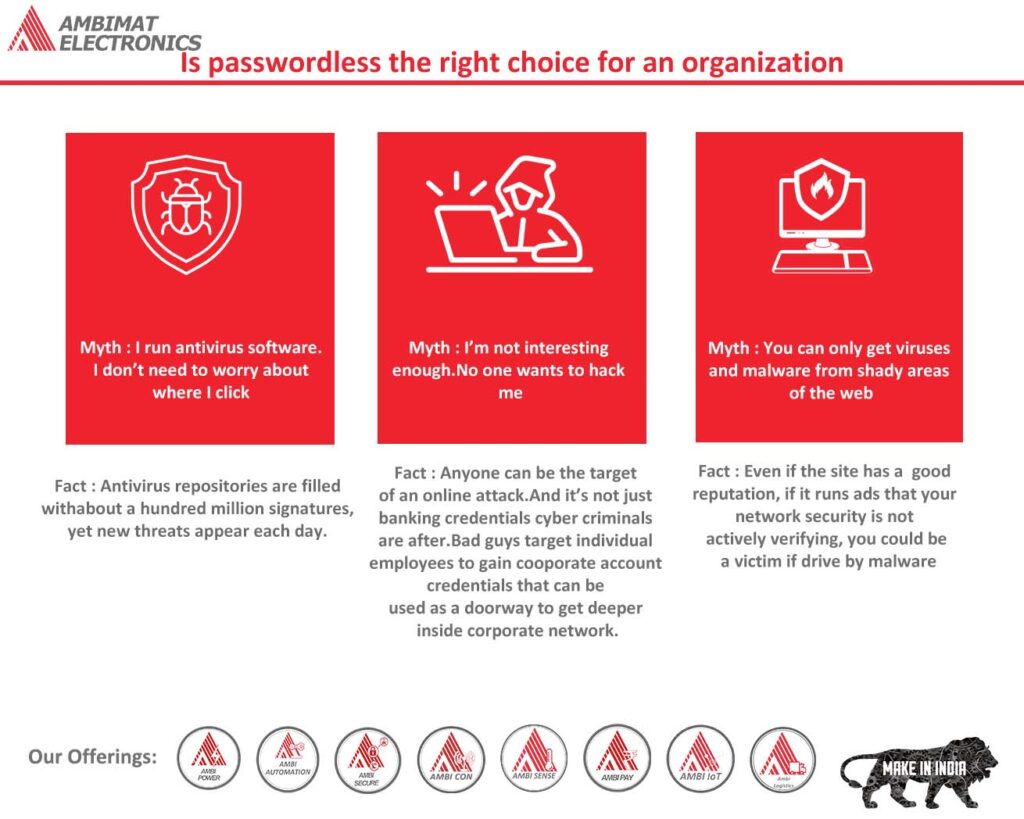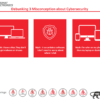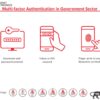Dear Readers,
This week’s blog is about the Implementation, Best Practices, and Benefits of multi-factor authentication for organizations. One of the first challenges as organizations start the journey to passwordless authentication is user adoption.
How to get users re-trained on a new way to access services after years of using passwords and legacy two-factor authentication? The larger and more distributed the workforce, the more complex the challenge.
One of the most important considerations when going passwordless is how to ease users into accessing systems via new passwordless capabilities and how to enable passwordless access for older systems that may not comply with the latest technology standards.
The use of multi-factor authentication is vital, as it ensures that information is only accessed by the intended person, making it harder for cybercriminals to steal. If user data is less
tempting, cyber thieves will go for a different one. Multi-factor authentication is a blend of two different factors. One is usually the username and password, which is something the user knows.
Ambimat Electronics, with its experience of over forty years, desires to draw the attention of its readers and potential customers towards this blog post about their new product called AmbiSecure key and how it will benefit us.
Is passwordless the right choice for organization?
As the name implies, passwordless authentication is a type of user verification in which knowledge-based secret isn’t necessary to access systems and database. Passwordless is often confused with multi-factor authentication, as there are multiple authentication factors, but unlike MFA, passwordless uses only one highly secure factor instead of many. Unlike passwords, passwordless functions by verifying user identity with one or two factors instead of characters and numbers.
Possession factor
An object that uniquely identifies the user, and can be anything from a one-time password
sent to user email or mobile device, to a hardware token.
Inheritance factor
Also known as something only the user has based on their biometrics, like their fingerprint,
voice recognition, or face recognition.
What does passwordless prevent?
Cyber-attacks become much harder with passwordless authentication. Let us look into some forms of attacks that passwordless prevents:
- Shoulder surfing: Shoulder surfing refers to peering over another’s shoulder while they are typing their passwords on their device.
- Brute force attack: Repetitive login attempts are made by attacker using combination of letters, symbols, and numbers to guess a password.
- Spear Phishing: The goal of this type of cyber-attack is to obtain sensitive information, such as passwords and other personal data from users through fraudulent
emails that appear to be from trusted sources.
Advantages of passwordless authentication
- Strong SecurityPasswords controlled by users can be extremely vulnerable because they can be shared and users can use similar passwords across multiple platforms and devices.
- Streamlined user experienceRemembering passwords is a cumbersome process, especially when they several for multiple devices. Passwordless offers a seamless user experience as it foregoes the reliance on memory, or having to remember password, make the entire process more efficient.
- Saves timeConstant maintenance by the IT departments is necessary for traditional passwords, with passwordless engineers time are saved and they can focus on other high priority tasks, as they will have fewer calls to attend in respect to password problems.
Is passwordless authentication safe:
It is pretty much obvious that almost all of us are concerned about our data and privacy, and as we so much habituated on using passwords, that we associated them with the highest level of security.
Passwordless authentication alone does not solve issues related with passwords automatically.
Many users are reluctant of using service such as email or text to send code or links, as such communications networks could be vulnerable. Despite the fact that even a compromised email could be used to reset password, it only goes to prove that passwordless doesn’t hold any additional risk.
Storing vital information is must for organization, irrespective of the authentication methods they are using.
So, is going passwordless the correct choice?
One thing is for sure, humans are incapable of remembering tons of passwords for numerous device that we access daily — unless we have a computer chip integrated in our brains. For this particular reason, going passwordless authentication is the correct choice for many organizations to adopt.
There are many IT companies that can help organization decide whether implementing passwordless authentication is the right choice for your business. AmbiSecure is one of them. Having outside expertise such as AmbiSecure will make the transition to passwordless a smooth one while training and support will be provided to ensure organization get the most of their investment.
AmbiSecure: The right choice for passwordless authentication
FIDO2 is a standard that simplifies and secures user authentication. It uses public-key cryptography to protect from phishing attacks and is the only phishing-proof factor available. Corporations around the world and across many sectors, including healthcare, can benefit from Fast Identity Online or Fast ID Online (FIDO) authentication, which their employees and users can use to minimize security risks, and improve overall user experience. The AmbiSecure key and card is FIDO certified which offers superior security by combining hardware-based authentication and public key cryptography to effectively defend against phishing attacks and eliminate account takeovers.
AmbiSecure helps organizations accelerate to a password-less future by providing FIDO2 protocol support. Not only does FIDO2 supports two-factor authentication, but also paves the way for eliminating weak password authentication, with strong single-factor (passwordless) hardware-based authentication. The AmbiSecure provides a simple and intuitive authentication experience that users find easy to use, ensuring rapid adoption and organizational security. Ambisecure key or card does not require a battery or network connectivity, making authentication always accessible.




